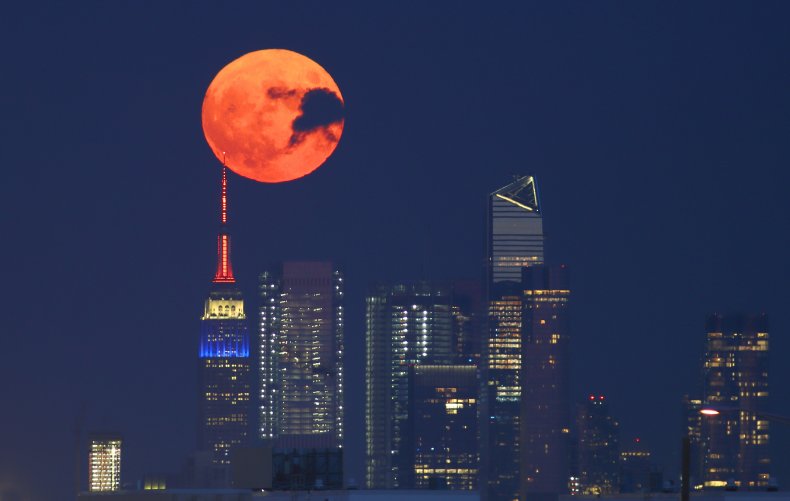When Is the Next Full Moon 2021? Sturgeon Moon to Rise After Jupiter Appears Its Brightest
The next full moon in 2021 will occur shortly after the largest planet in the solar system, Jupiter, appears at its brightest in the night sky.
The full moon in August—traditionally known as the sturgeon moon—will appear on the night of August 21-22.
Full moons occur when the Earth is located directly in between the sun and our natural satellite.
Technically, this alignment only lasts for a moment. This year it will happen at 8:02 a.m. ET on Sunday, August 22, according to The Old Farmer's Almanac.
But to most casual observers, the moon will appear fully illuminated in the sky for a night both before and after this peak.
The names given to full moons originate from a number of places and historical periods, including Native American, colonial American and European sources.
The name "sturgeon moon" comes from Native American tribes who once considered this period of the year prime time for catching sturgeon fish in the lakes of North America.
Sturgeon are a group of large fish that have been dubbed living fossils because they have remained almost unchanged for more than 100 million years. Sturgeon populations have declined dramatically and most species today are considered critically endangered.
The full blue moon this August is also considered a "blue moon" because it is the third of four full moons in the Northern Hemisphere's summer, and the Southern Hemisphere's winter.
This type of blue moon is known as a seasonal blue moon. But there is another definition. The second full moon in a calendar month with two full moons is referred to as a monthly blue moon.
Both types of blue moons are relatively rare, occurring once roughly every two or three years, according to timeanddate.com.
The August full moon will appear soon before Jupiter shines brightest in the sky than at any other point in the year. The gas giant will be at opposition on August 19-20, meaning the planet will appear opposite the sun as seen from the Earth.
This is the best time of year to observe the planet because it will be as close to Earth as possible, appearing bigger and brighter.
According to EarthSky, you can look for the planet in the southeastern sky at nightfall and early evening, high in the sky around midnight, and low in the western sky close to sunrise.
Jupiter's fellow gas giant Saturn was at opposition on August 1-2.


